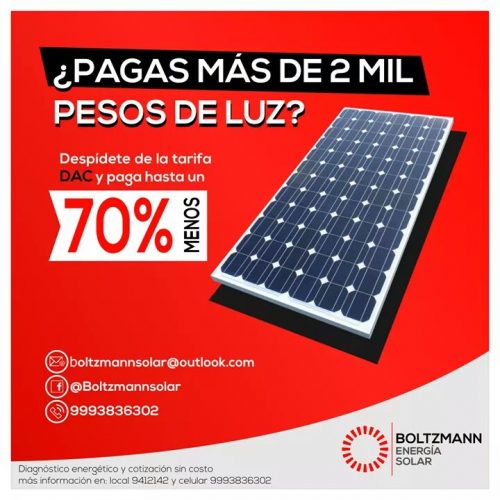We’ve recently become a solar home, and I’ll now share this very positive experience with you. With abundant sunshine, and the ability to export power to the utility grid, thus bypassing the storage problem of batteries which presently do not recover the cost of investment, it now makes moral and economic sense to reduce participation in the carbon economy. The return-on-investment is probably about four to five years, as long as a hurricane doesn’t smash the panels.
We are generating about 20 kwh per day, which is more than we use. As we’ve never run the air conditioners in the past, we can now do so without breaking into the high-rate bracket — while enjoying some cooler air in the bedroom at night, if we wish. (We’ve only done this once so far, but had to sleep with a quilt to fend off the chill.)

Production chart kept by the inverter’s communication package. The blank day is when we were shut down, awaiting our new bi-directional meter from CFE. The lowest days where very cloudy — one being tropical storm Franklin.
The inverter we selected is a German device made by Siemens (SMA). Many folks are going with micro-inverters which are built into each panel, and reside on the roof. I decided against this approach, as inverting (modifying the current from DC to AC, prior to delivery to the utility) is a substantial portion of the investment. I’m not comfortable with having the entire investment outdoors. And an additional benefit of our chosen inverter is that it is the first of its class to allow homeowners to draw some power for the home, if the grid is down — like after a storm. (Micro-inverters can’t do this, to my knowledge.) Of course, this is only possible during daylight hours. (It can’t run a fridge overnight, of course.) And the amount of power available would depend upon the amount of sunshine — enough to run some fans, charge phones and laptops; but probably not enough to start pumps.

Here’s what a bright shiny day looks like. Our system is roughly 4000w. And here are some additional details saved by the monitor:
I can access the communications package from anywhere by phone to monitor the system. Our chosen brand and size of solar panels, Trina 320w, were on hand here in Merida at Excel Solar, which is a supplier to the trade, not to residential customers. (I’m grateful to Alejandro Cauich of Excel for his explanations, and kind assistance.) These are tier one panels, meaning they are rated for commercial installation by a utility. (There are plenty of less efficient panels on the market.) Ratings for various panels can be compared and studied online.
I interviewed three solar firms before selecting Juan Pablo Lopez’ team at Boltzmann Solar. I really enjoyed working with them. I already speak the dialect known as alternative energy, having installed a wind generator at our farm up north, as well as speaking some Spanish. And their team speaks English. It was a good fit. And I’m very confident that the panels are well-anchored and will not blow off the roof. (The big concern is flying trash during high wind — not sure what to do yet on this topic.)






Good for you. I don’t think that would work as cloudy as it gets here, but turbines would probably work well in Wind-chester.
Ha, Wind-chester! Clouds do reduce production, but Germany is cloudy, and is harvesting plenty of energy from Solar. If we were still in cloudy Buffalo full time I would consider solar, as I have a good south-facing roof for a small array.
Chinese ownership of big new solar farms for Yucatan:
http://www.theyucatantimes.com/2017/09/solar-energy-will-help-power-merida-in-june-2018/
(It’s worth considering Jinko-brand panels for residential installation, as it will likely be readily available in Merida ; but verify by checking with Excel, or other local suppliers, as this is speculation on my part.)